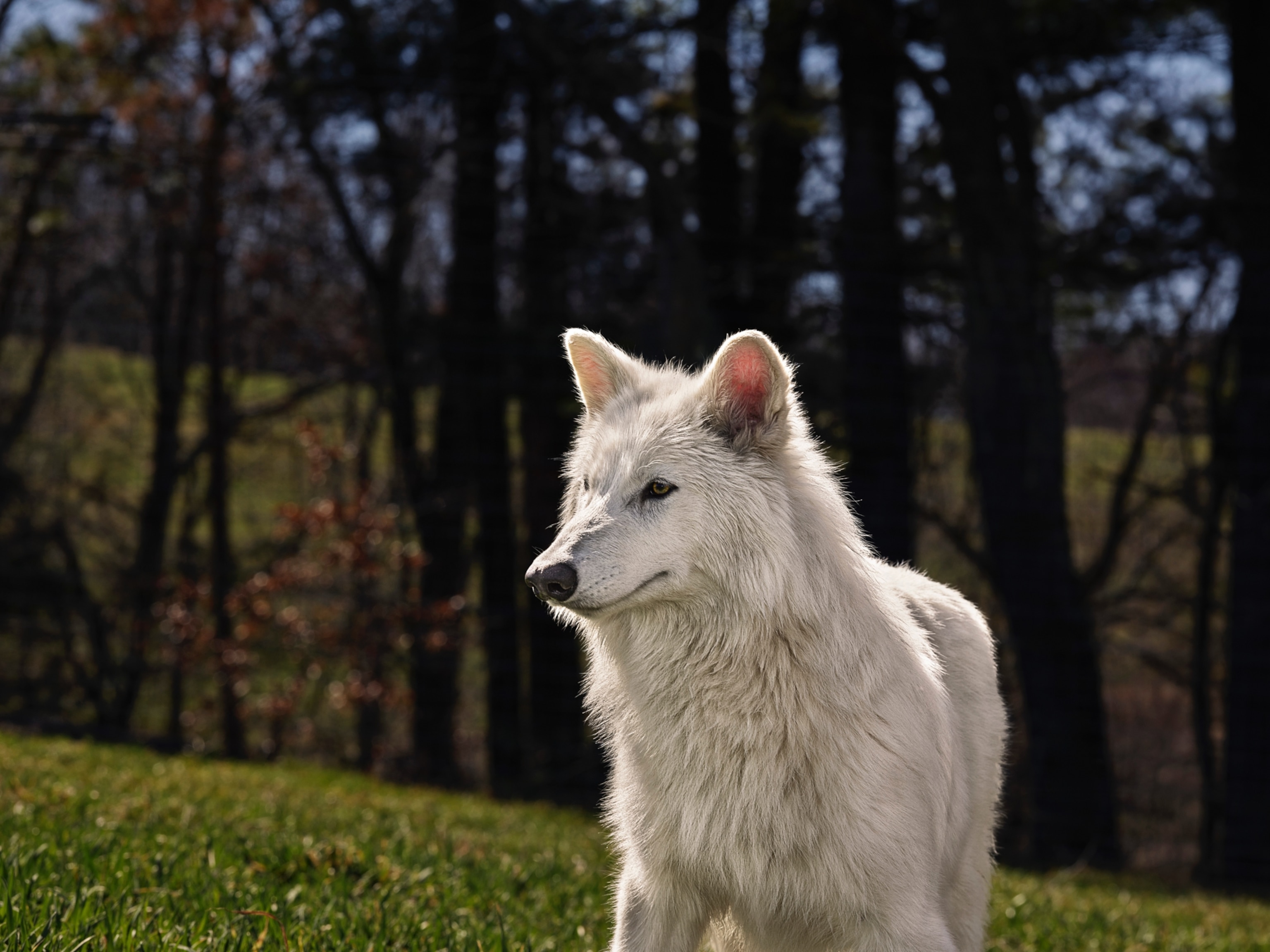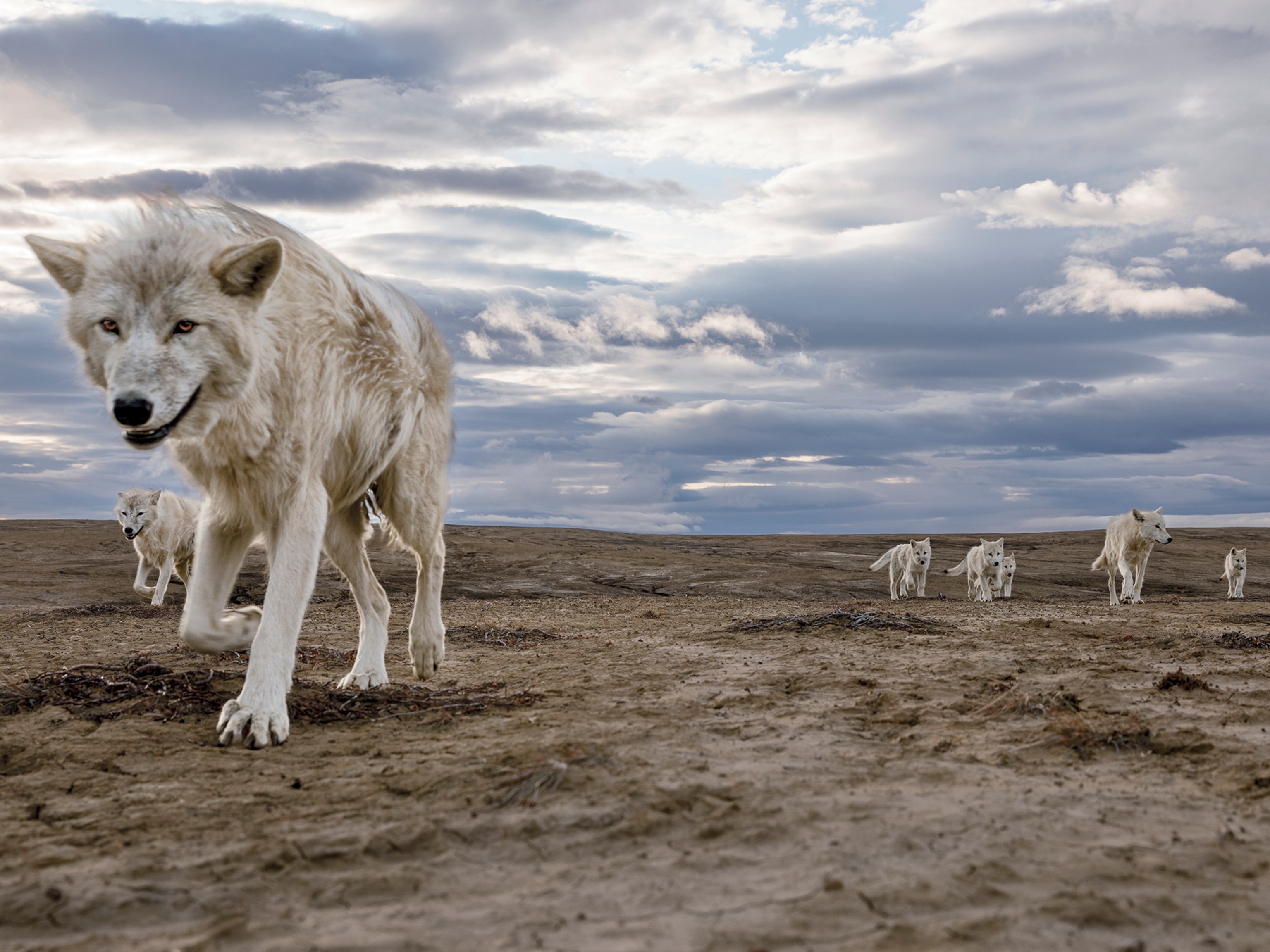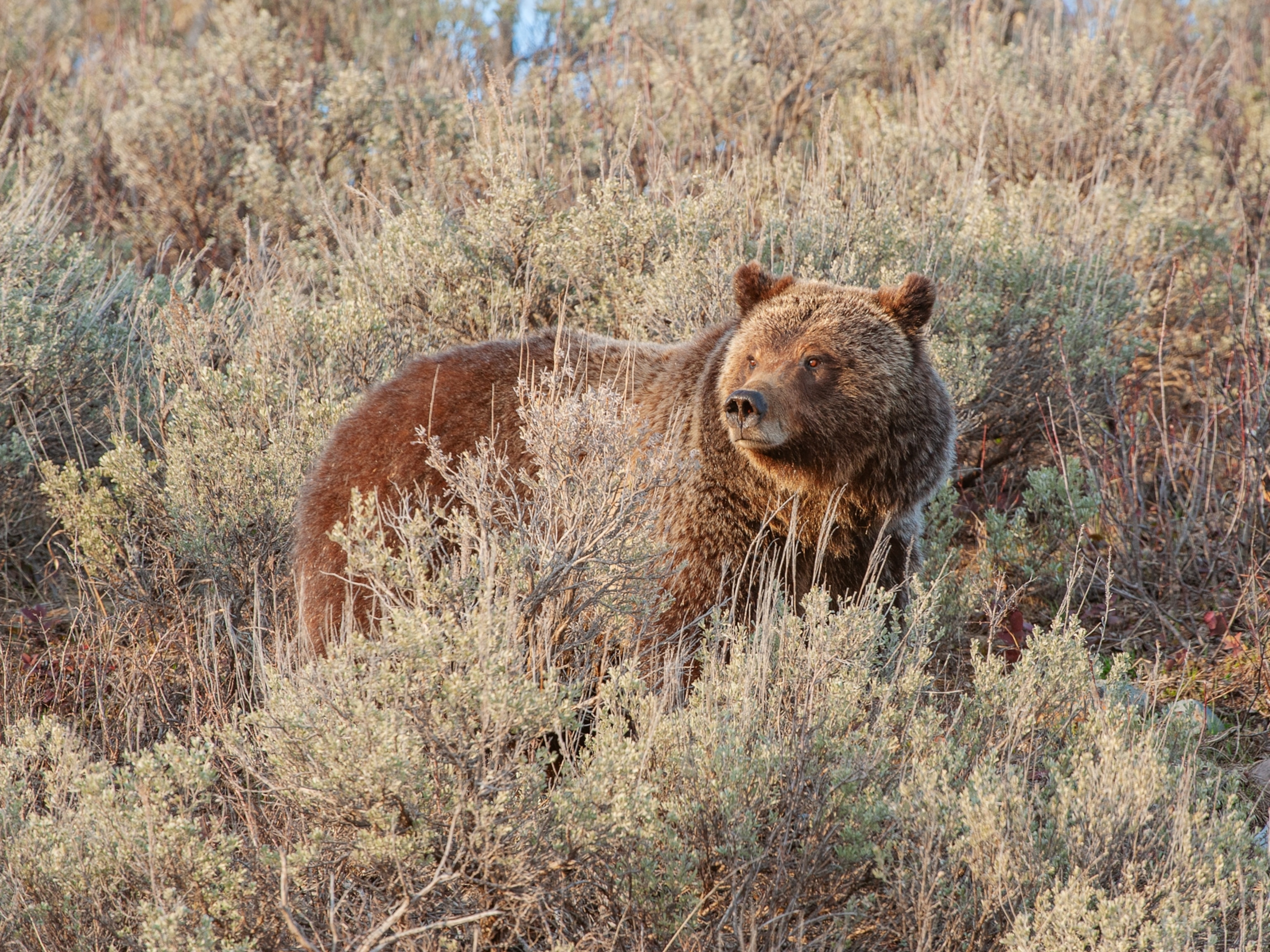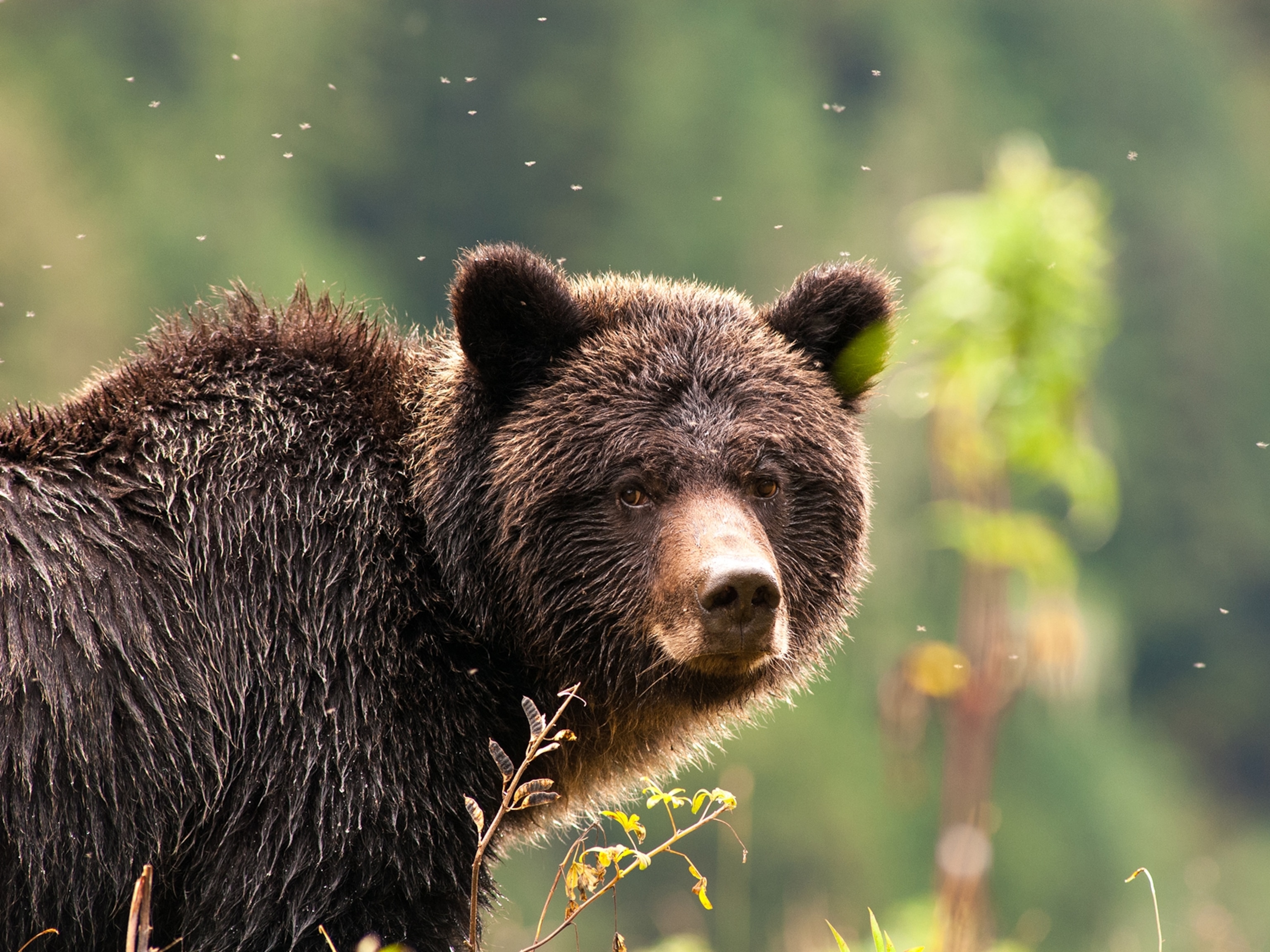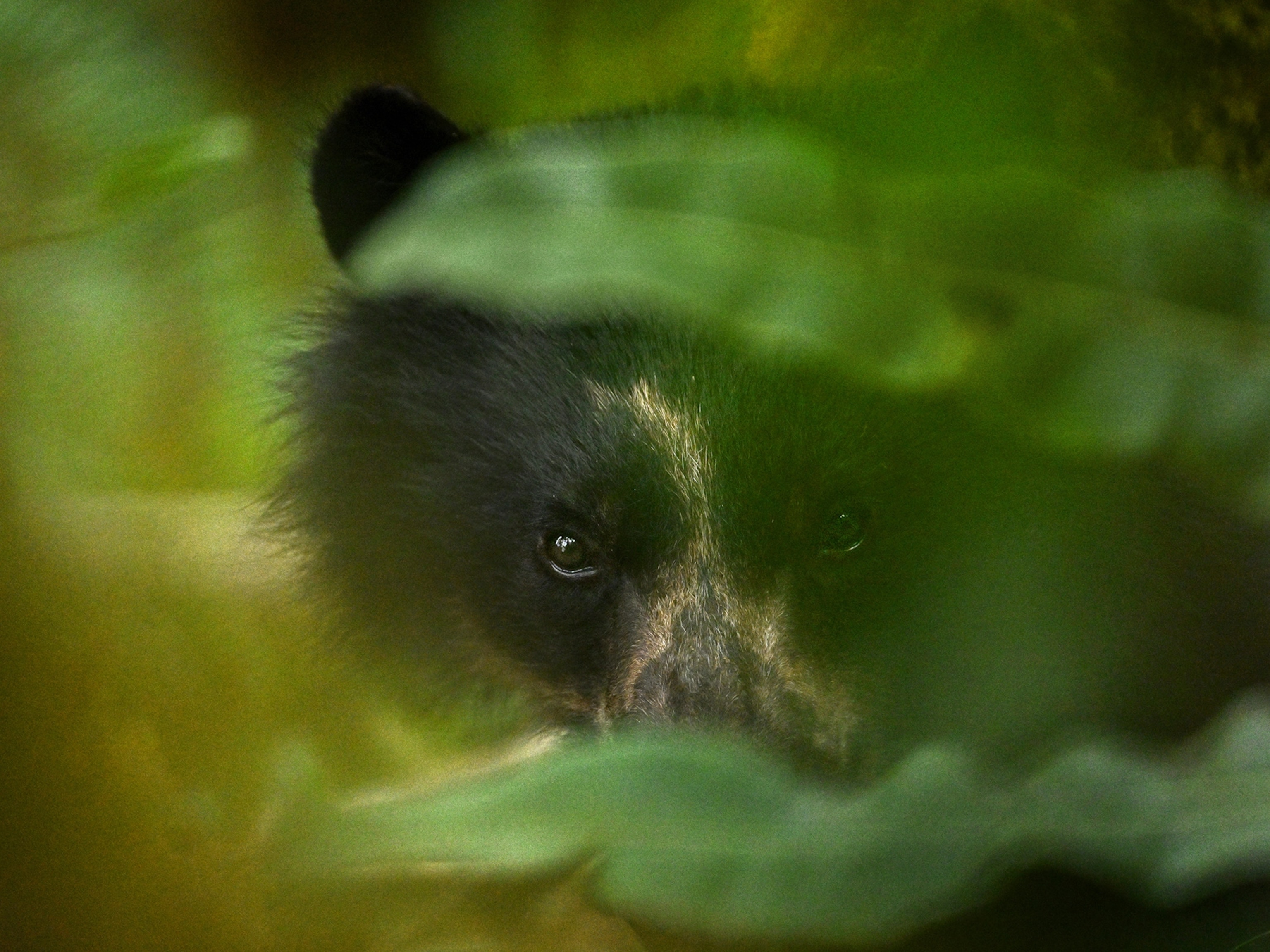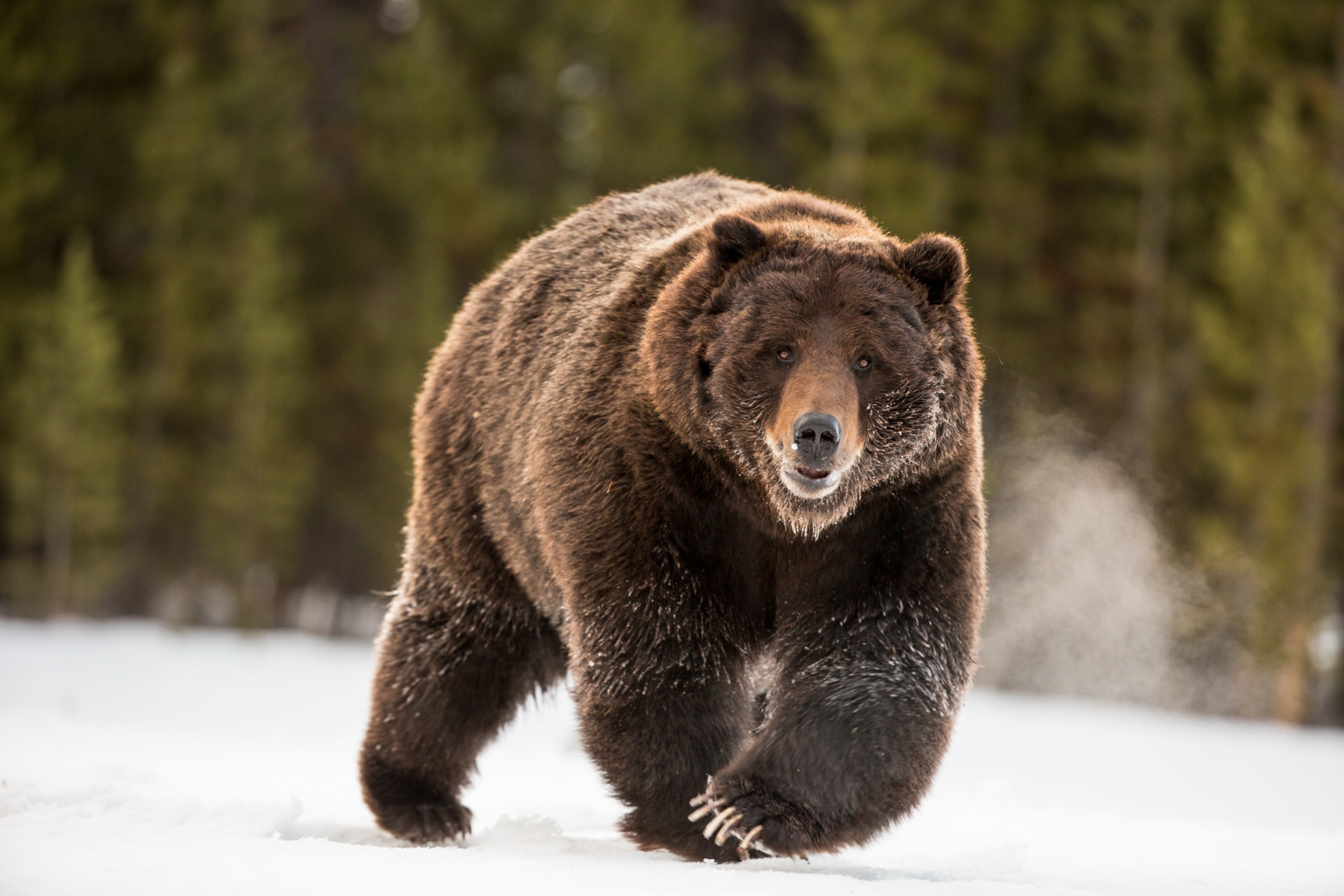
Why was a grizzly bear hanging out with a wolf pack?
The interspecies encounter, recorded in Yellowstone National Park, is likely due to one key factor.
It was a snowy October day when Joshua Welter spotted the large gray wolf pack just south of the road in Wyoming’s Yellowstone National Park. However, these wolves had an intriguing visitor in their midst: a grizzly bear.
Welter and his tour group marveled as the grizzly and wolves mingled for several minutes before they walked away together.
"We had never seen an interaction quite like this," says Welter, who has been operating in or around Yellowstone for the past 12 years, and now works as a guide for the tour operator Yellowstone Wildlife Profiles.
He says the same bear was spotted multiple times around the canines for the next two weeks—which would be an abnormally long period of time for a grizzly to linger around the same wolfpack, says Clayton Lamb, a wildlife scientist at the University of British Columbia and research firm Biodiversity Pathways. (Read how wolves have stabilized the Yellowstone ecosystem after being reintroduced.)
In many cases, wolves will drive away unwelcome grizzly bears when they get too close to their pack, or a bear will scare off wolves entering their territory. But a video of this encounter, which occurred in 2021 but was only recently posted on Reddit, seems to show a temporary truce between these two apex predators. So what's going on here?
It may be heartwarming to think the bear has become an honorary pack member, but in reality, food is the likely motivator.
Bears will sometimes snatch a wolf pack's kill if they are hungry enough, according to Daniel MacNulty, a wildlife ecologist at Utah State University.
"I've seen this kind of interaction between a large pack like that and a single bear," he says. "It does kind of look as if the wolves are maybe being playful with the bear, or vice versa, but honestly, I think it's all business for both the bear and the wolves."
Risk versus reward
With high populations of both species living in Yellowstone, grizzly bears and wolves interact more than you might think.
In Yellowstone, grizzlies are seen more often in the fall as they venture out to consume as much food as possible before winter hibernation. During this period, known as "hyperphagia," bears take risks to obtain more calories—like stealing wolves' food, says Aimee Tallian, a scientist with the Norwegian Institute for Nature Research who studies wolf-bear interactions.
"There could be a carcass a quarter mile away that you just can't see," says Tallian. "It's all this push and pull of risk versus reward—that's what it comes down to, including the kind of tolerance that you see in that video."
The wolves are likely also running the same calculations when deciding whether to drive off a grizzly and risk injuring members of the pack if the animal fights back, she adds. It's not unusual for a hungry bear to steal food from other animals, including ravens and mountain lions; grizzlies will sometimes even lie on the carcass to claim it as their own. (Learn about the odd phenomenon of moth-eating grizzly bears.)
Grizzlies “are more scavengers and opportunistic foragers," Lamb adds. If that Yellowstone bear was following the wolves, it would "essentially be a parasite" for the pack, he says.
Tallian led a 2022 study in Yellowstone that found a bear’s presence can decrease a wolf pack’s overall kill rate, likely because the wolves wait around to see if the grizzly leaves behind scraps after stealing their kill. Oftentimes, this is less dangerous for the wolves than attempting another hunt, as the canines can be injured by their prey such as elk or moose.
A hot spot for seeing wildlife
A grizzly bear traveling around a wolf pack for weeks at a time has rarely been documented on camera. But Yellowstone is the perfect place for it. Unlike the dense forests of Scandinavia—where Tallian has yet to see a wolf—the U.S. national park's open grasslands allow for prime wildlife viewing.
"Yellowstone has very large packs of wolves," Lamb says. "And they have grizzly bears that overlap with them, which is not uncommon, but they do so in very open and easily viewable landscapes. It can be fairly difficult to observe those sorts of interspecies interactions in other places."

